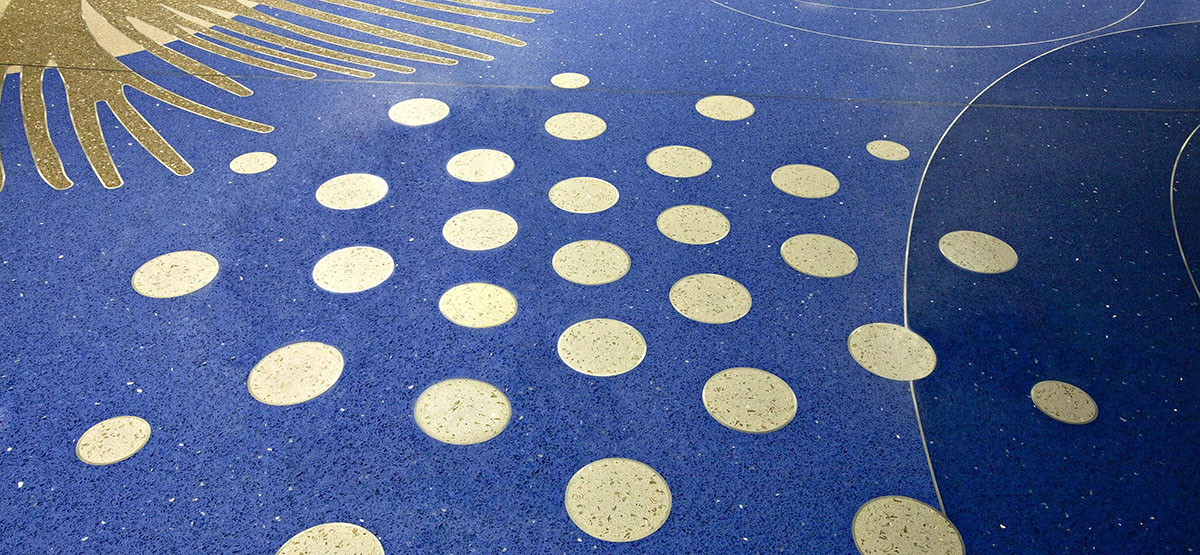
Whether you’re leading a project to redesign your office building or a commercial property owner looking to restore a historic building for an all-new purpose to reap unbound profits in the future, you’ll need to plan a few cost-saving strategies well before you begin to break ground or officially partner with a general contractor; failure to do so could result in a stalled project, blown budget, or tremendous hit to your bottom line.
At Klein and Company Inc, we know a thing or two about commercial projects; as both terrazzo flooring installers and nationwide suppliers, we work with contractors and subcontractors for commercial redesigns across the country on a daily basis. Often, the simplest strategies amount to a smoother, less expensive commercial redesign, while a lack of planning adds up to dollars and delays.
When you’re planning a commercial redesign, it isn’t like doing work on your home. By partnering with a general contractor that is even the slightest bit unprepared to handle your type of project, you could be ushering in disaster. When you’re going through the process of bidding out the job, make sure that you request RFPs from all surrounding commercial general contractors, even those that may seem geographically suboptimal, to receive as many bids as possible. The benefits of numerous bids include:
When done correctly, you should find yourself choosing between a good, better, and best option, with only your budget and their timeline to consider when choosing between the three. By following this process, you’ll learn how different GCs would handle the project, which could be vital in dealing with whomever you choose down the road.
Despite the robust process we’re proposing above, it is important that your construction management company and/or general contractor come on board early in the process. By getting them in before your architectural plans are complete, you can benefit from their opinion of the design and make adjustments that can make the project infinitely easier. Often, construction companies wish they were involved in the design process far sooner than they are typically, simply to avoid the unnecessary challenges created by plans drafted at the hand of those not in the field alone.
During the construction process, it is important that you remain nimble and agile to pursue any opportunities that may come your way, while also staying firmly dedicated to your original design and desires. To put it plainly, the ideal client for a construction company is one that knows what they want, sticks to it whenever possible, but is able to make changes to overcome any unforeseen hurdles that arise during the building process. If you’re working with a panel or group of people, then make it clear that the window for their suggestions or changes to be heard closes once the design stage is complete, and changes can only be made on an as-needed basis.
Your project shouldn’t sneak up on you, but instead be carefully planned ahead of time. This means knowing exactly when ground will break on the project, how it will impact your business, what measures need to be taken to continue business operations, and even how long it will take to complete the project in each of its stages. Every single day you spend figuring things out during your project, you can bet that you’ll be losing a tremendous amount of money; always plan and account for as many details as possible well before you need to have them implemented to avoid costly mistakes and decisions made on the fly.
Above all, the materials and upgrades you choose should not be short-sighted and lead to another renovation or remodel as soon as they are completed. Instead, think about the long-term profits of the building (if you may be selling before the features need updating) or the continued applications and needs of your growing industry. For instance, installing terrazzo flooring in your building can give you 40+ years of solid, beautiful service, whereas a carpeted floor could see another crew in your space within a few years. It may not seem like much, but by simply picking a recycled terrazzo flooring with a customized or widely-acceptable design, you can increase your property’s long-term value for your company and future owners alike.
When you’re ready to begin, shop our entire selection of terrazzo flooring supplies and aggregates online!